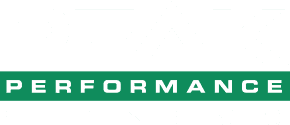Myocardial infarctions, better known as heart attacks, are one of the leading causes of death in the United States. Generally, heart attacks are a result of coronary heart disease (CHD). With CHD, plaque begins to buildup in the coronary arteries leading to a reduction of oxygen-rich blood to our heart. If the plaque builds up too largely and the heart does not receive enough blood, the heart muscles start to die. At this point, heart damage is not obvious and severe or long-lasting complications can occur, including a heart attack.
Symptoms are not always present in CHD and but there are a few major symptoms associated with a heart attack. These include chest pain, upper body pain above the belly button and shortness of breath. Thankfully, heart attacks and CHD are preventable and many risk factors can be controlled. The risk factors include:
- Smoking

- High blood pressure
- High blood cholesterol
- Obesity/Overweight
- Lack of physical activity
- Unhealthy diet
- High blood sugar due to insulin resistance or diabetes
*Items in BOLD can be further controlled by increased physical activity
In the event that someone has experienced a heart attack, it is possible to return to normal activity. Most people that do not experience chest pain or discomfort or other problems will typically return to normal activities within a few weeks and walking can start immediately.
When programming for an individual that has had a heart attack it is important for them to ease back into exercise. The key is to slowly build up to being able to withstand 30 minutes of moderate intensity activity. During this period, low-impact movements like walking or light gardening are preferred. As the individual gets stronger and gains stamina, others activities like swimming, cycling or non-contact sports can be added.
Strength training is not recommended in the short-term and, apart from light weights during the early recovery period should be avoided until a physician or cardiac rehabilitation team confirms approval to begin. This is due to the spike in blood pressure that is associated with heavy lifting.
If you would like information pertaining to CHD or myocardial infarctions be sure to check out my.clevelandclinic.org. Also, be aware that most patients will receive a prescription for cardiac rehabilitation, which has been an effective program for recovery post-myocardial infarction. Feel free to ask any of our fitness professionals any questions you may have.
By Julian C. Lee

